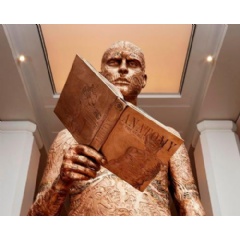Science Museum transformation completed with major medical exhibit opening
London’s Science Museum says it has now completed its “Masterplan” transformation project, started in 2010, with the opening this weekend of 3,000sq m (9,842sq ft) of new galleries that together comprise the largest medical exhibit space in the world.
The Medicine: The Wellcome Galleries development has cost £24m (US$31m, €28m) and features more than 3,000 medical artifacts, artworks, interactive games and immersive experiences that the museum says “bring the history of medicine to life”.
Consisting of five new galleries that have been designed by WilkinsonEyre, the displays allow the collections of Henry Wellcome and the Science Museum Group to go on show, revealing how the quest to better understand the human body has transformed medicine.
Among the objects on display are the first ever stethoscope, lancets used by Edward Jenner in his smallpox vaccinations, the world’s first MRI scanner, and medicine chests used on expeditions to Mount Everest and Antarctica.
Faces, voices and stories of patients and practitioners are featured throughout in films, displays, interactive experiences and portraits, while a number of artworks have been commissioned for the galleries, including Self-Conscious Gene by Marc Quinn ‒ a monumental bronze sculpture inspired by the tattooed body of model Rick Genest, that greets visitors as they enter the galleries.
Sir Ian Blatchford, director of the Science Museum Group, said that the exhibits were “intellectually adventurous, rich in personal stories and at times incredibly moving”. He continued: “The scale and ambition of these five vast galleries is unprecedented. Over three million visitors a year, each with their own personal experiences of medicine, can now uncover remarkable stories about our health in the world’s largest medical galleries.”
The five galleries include those examining the transformation of medicine through research into the human body, personal experiences of medical treatment, the health challenges faced by groups, cities and populations, the faith and trust we place medicine, and the equipment, both extraordinary and familiar, used in medicine.
The Masterplan project has transformed more than half of the Science Museum since 2010, creating, according to the museum, aesthetically and intellectually stimulating new spaces for visitors.
( Press Release Image: https://photos.webwire.com/prmedia/6/250533/250533-1.jpg )
WebWireID250533
This news content was configured by WebWire editorial staff. Linking is permitted.
News Release Distribution and Press Release Distribution Services Provided by WebWire.
